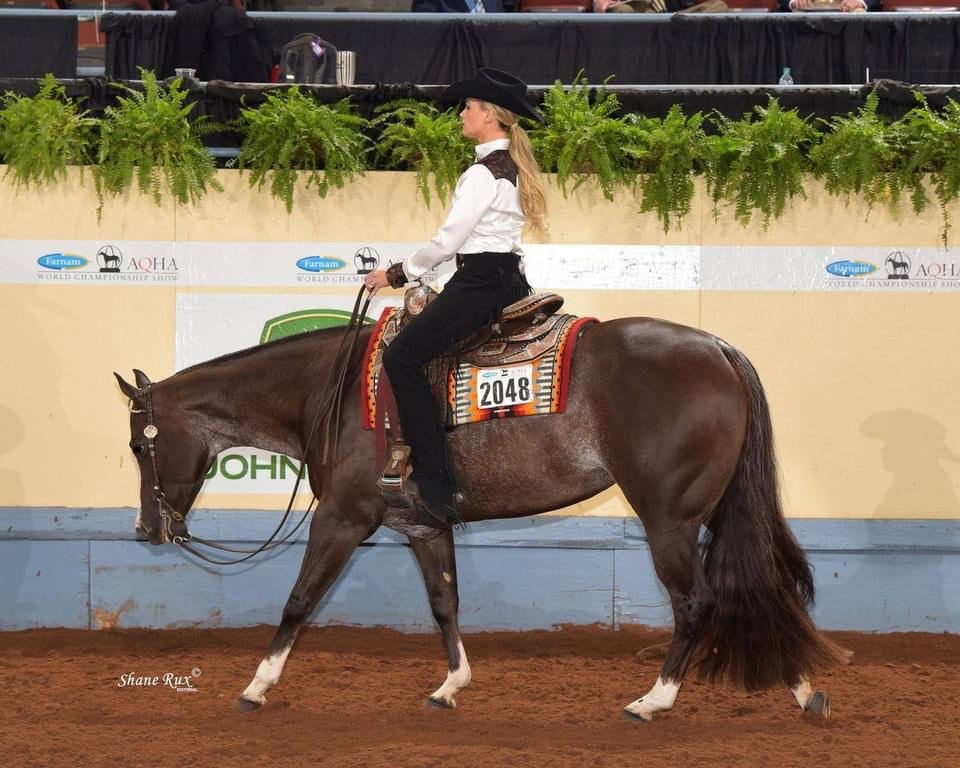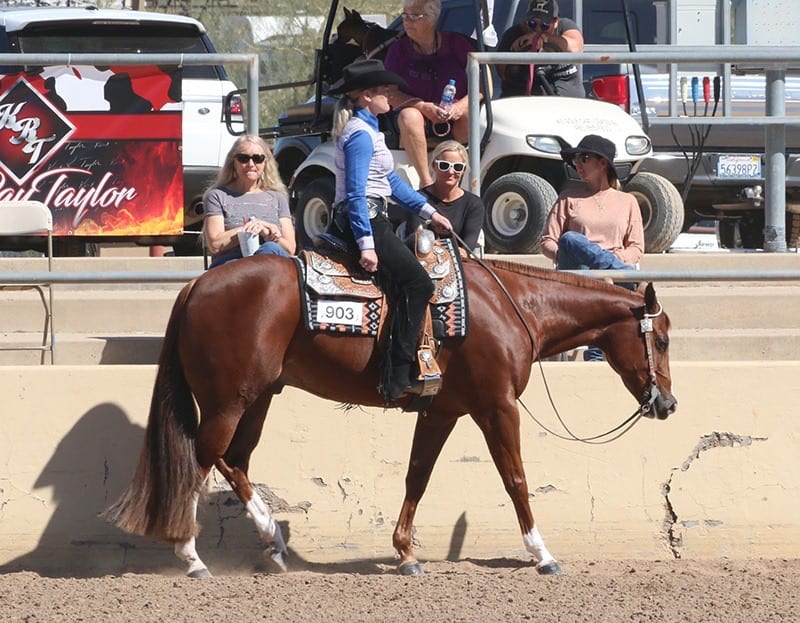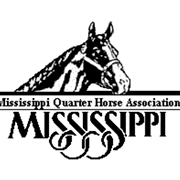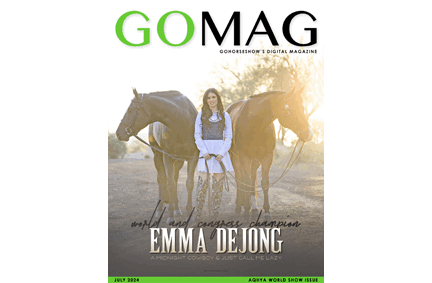Consider this scenario: It’s showtime. You’ve prepped your horse and practiced your tail off. You’ve got your horse jogging and loping beautifully with a rounded top line and a soft, flowing cadence. You’re ready to win as you enter at the jog. But soon, the announcer calls for the walk, and your trusty mount loses his frame, hollows out his back, and is antsy as he anticipates the call for the lope.
Your “should-have-been-winning” ride fell apart at what most assume is the easiest call in the class – the walk. This is not an uncommon issue. But the good news is that it’s usually solvable. We talked to World & Congress Champion Western Pleasure trainer Cody Parrish of Pavo, Georgia, who offered suggestions to solve this problem.
A Look at the Rulebook
First, it’s important to understand what judges look for in an ideal walk. The 2024 AQHA rulebook describes the walk as “a natural, flat-footed, four-beat gait. The horse must move straight and true at the walk. The walk must be alert, with a stride of reasonable length in keeping with the size of the horse.”

The rulebook further distinguishes an average walk from a poor and a good walk. It describes a horse with an average walk as having “a four-beat gait, level top-line and is relaxed,” whereas a poor walk has an “uneven pace and no cadence. Has no flow and may appear intimidated or appear to march.” A horse with a good walk is described as having “a flowing four-beat gait, level top-line, relaxed and bright and attentive.”
In his training program, Parrish strives to help his horse achieve an ideal walk that he describes as a flat-footed, relaxed, and cadenced gait that is ground covering. “You want to see correctness and brokeness in a horse at the walk. A good walk is always relaxed, cadenced, easy, and pleasant to ride,” he says, adding, “Some horses look robotic and lack any expression at the walk. However, I like horses showing some expression while appearing relaxed and pleasant.”
The robotic horse described in the scenario above would not score average or above average on the walk. The issue can stem from various causes: a lack of focus on the gait in the training program, a horse that is naturally wired to be a little more antsy, or something like inattentiveness or noise sensitivity. No matter the horse’s cause or demeanor, Parrish’s first suggestion is always to make the walk a training focus from the horse’s first day under saddle, intending to stop the problem before it can start.
Stop it Before it Starts
According to Parrish, many of the problems seen at the walk are due to a lack of focus on the gait in the training program. To him, being proactive is far more efficient than being reactive once a problem develops, so he makes teaching a relaxed walk a foundational element of his training program.

“It’s always easier to avoid letting something become a problem than it is to fix it once it has become an issue, so in the early stages of starting colts and riding young horses, I’d encourage everyone to make the walk an equal area of emphasis. This means ensuring you spend enough time teaching the expectations of that gait at the beginning, middle, and end of each training session. You can’t spend too much time doing it. Mix up the gaits and give them lots of opportunity to perform that gait and let them know that their job there is solely to relax and walk,” Parrish says, explaining that sometimes horses have a lot thrown at them without an opportunity to relax, and that can cause them to tense up.
When it comes to broke horses, issues at the walk can still spring up because riders don’t spend enough time practicing it. “Remember that it’s judged just like the jog and the lope, so when a rider doesn’t concentrate on it and doesn’t make it a priority in their training program at home, that can reveal itself when it’s time to go show,” Parrish warns.
Include Opportunity for Mental Stimulation at all Gaits
For those broke horses, issues sometimes arise at the walk because they don’t feel like they’re being mentally stimulated. As many know, when a horse isn’t given something to think about, it will find something to think about. Enter the scary garbage can or the sudden muscle tenseness when the announcer clicks on the microphone. When a horse is asked to focus on its job, rider, or maneuver, these distractions get much less of its attention.
Parrish suggests incorporating many body control maneuvers to keep a horse’s mind engaged during the walk. “Turns, flexion, standing still, lateral movement, breaking him loose at the hips and the shoulder – all of those things help make the horse work and make it feel like it has a job at the walk. So, though we’re asking the horse to relax in this gait, we must keep him mentally challenged, and body control maneuvers will help do that.”

For horses that are very antsy at the walk, Parrish advises making the walk their only job for as long as it takes to feel comfortable in that gait. “For some horses, it may be that you don’t do anything but walk for 20 minutes, and then you get off, which can be their job that day. And you may have to do that every day for a while – maybe a week – until they’re comfortable there,” Parrish says. “You can apply all of the same things you want your horse to achieve at the jog and the lope to the walk. You can work on lifting the back, lateral motion, and giving to pressure at the walk just as you would at the other gaits.”
Admittedly, spending that time can feel frustrating and as if nothing much is being accomplished, but what’s arguably much more frustrating is being the horse that falls apart when the call is for a walk. Put the time in – at the walk – at home, and it will surely lead to success in the show pen.









